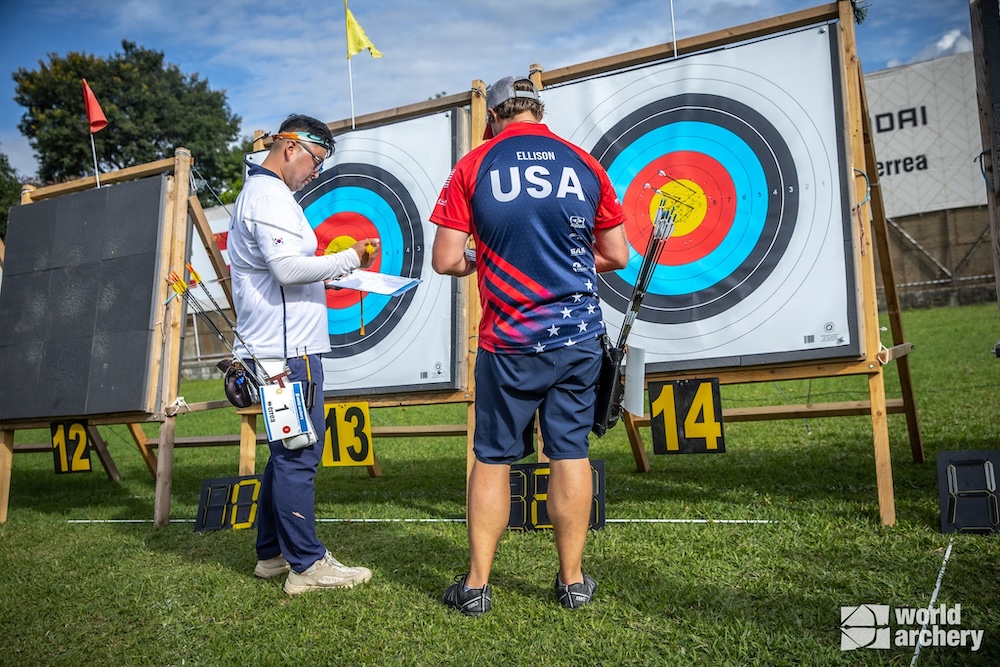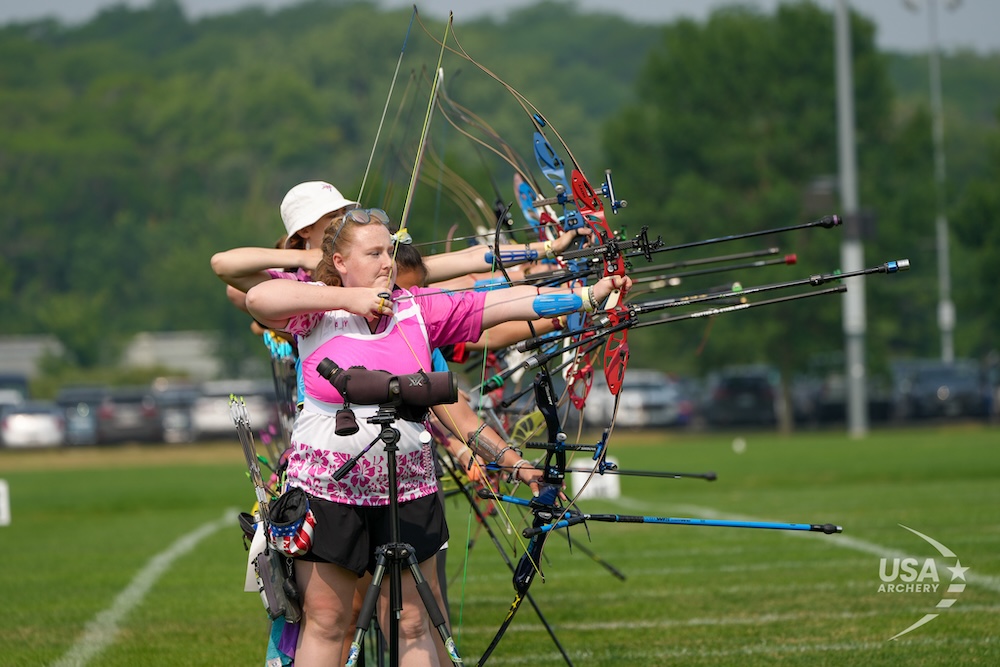Going to your first few tournaments can be daunting, especially when you don’t know the lingo. Experienced archers who have shot many tournaments have most likely come to know all the terminology that comes with shooting each type of competition, and this article will try to cover them all so that you can be confident in what everyone is talking about.
14
This is a 3D term used for a bonus ring on the animal during the finals round: The archer may choose to shoot this ring to try to gain more points, but missing it results in a 5 for score. High risk with high reward.
Aim Off
With this aiming method, in windy conditions, the archer aims at a different place on the target so that their arrows get pushed into the middle. For example, if their arrows are getting blown into the 8-ring on the right, the archer will aim in the 8-ring on the left.
Baby Ten
The inner 10-ring found on an indoor target face, reserved for scoring with a compound bow.
Bubble Over
Bubbling over refers to how compound archers use the bubble level in their scope to lean the top of their bow into the wind. When released, the arrow will have a trajectory going slightly into the wind, resulting in the arrow getting pushed back into the middle by the wind.
Bunnies/Birdies/Rabbits
Not the animals, but in field archery, this is referring to an extremely short shot that could measure anywhere between 20 and35 feet. Usually, you will have to train for these distances because your sight pin will be at a location that you don’t expect: Some people find that they are sighted in for 20 feet with a sight mark of around 45 yards.
Cut

A term used in field and 3D, cut refers to the amount of sight difference an archer will have to compensate for on uphill and downhill shots due to angles and gravity. For example, a 30-meter target shot at a 40-degree uphill angle needs to be sighted in more like 23 to 25 meters.
DOS
DOS stands for the director of shooting (pronounced both as D-O-S and as “doss”), which is the person who oversees the archery field. The DOS is usually positioned either in the middle of the field on the shooting line, or at one end of the field, in an elevated booth. This person oversees the timing system on the field and keeps the tournament running on schedule.
Inside Out
An arrow that’s in a scoring zone that isn’t touching the bordering scoring rings. Usually this is used for tiebreakers when archers are required to shoot an inside-out 10 to see who is the most accurate.
Judge
The judge or judges are in charge of ensuring safety on the shooting line and maintaining the rules on the field. They oversee everything from timing issues (if an archer releases an arrow after the designated shooting time) to calling arrows on the target should there be a disagreement between archers during scoring.
Liner

When an arrow is close to the line separating two scoring rings, it’s called a liner. In target archery, the arrow must touch the line of the higher scoring ring to get the higher score, and in field archery, the arrow must completely break through the line.
Pinwheel
Slang used to designate an arrow that hit the exact middle of the target.
Pro Line
Term used in field archery for a line that is drawn on the target in the 4-ring that cuts it in half, usually found on multi-spot targets at shorter distances. This line used to have a scoring designation back in the 1970s, but that method of scoring has become out-of-date. Current archers will use the pro line as a reference to the position of the arrow in the 4-ring.
Pulling the Line
This is a term that 3D archers use for an arrow that landed very close to a scoring line and because of the lines being melted into the foam rather than printed on paper, the arrow stretches the foam and pulls the scoring line toward the arrow, thus awarding the archer with the higher score value. Unfortunately, you can’t pull the line with paper targets.
Spotting Scope Height

In outdoor target archery, the top of your spotting scope is only allowed to be as high as your armpit. This rule came into effect around the year 2010 and was purely meant as a way for media to be able to photograph the archer’s face while they were at full draw. If you hear a judge talking about someone’s spotting scope height, chances are that it needs to be lowered.
Tweener
In field archery, this refers to an arrow that landed in the 5 that is halfway between the 5-ring and X-ring.
Of course, these are probably just a few of the terms you will hear at competition. Each style (target, field, 3D) will have their subtle nuances in speech that their archers are currently using, much like how the vocabulary of the younger generations seems to change with the passage of time. Going to as many competitions as you can will help you to understand all the lingo, and your comfort level (as well as your tournament scores) will certainly rise.



